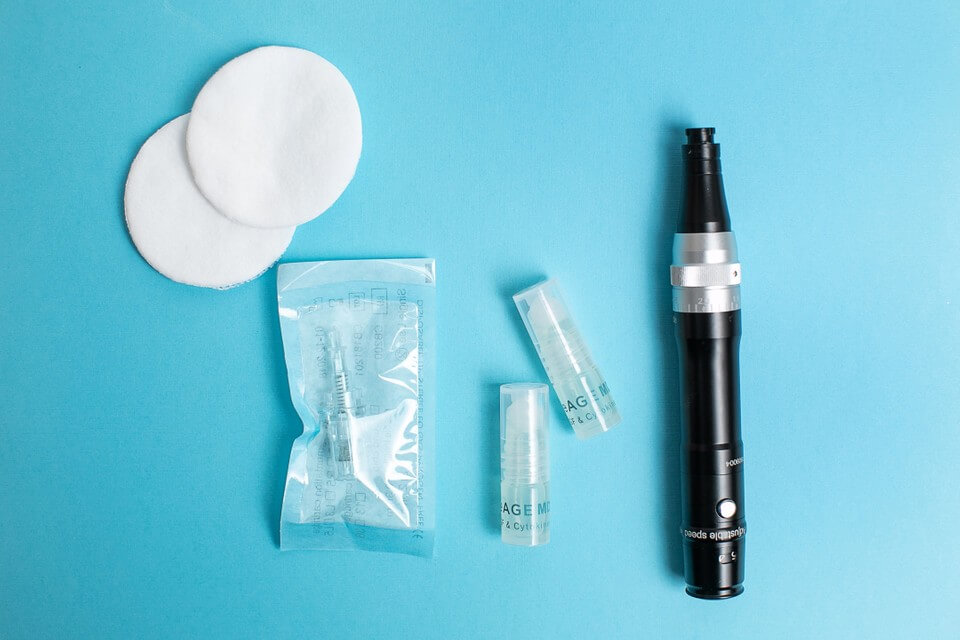Hey Calgary, did you know that we here at SkinScience Clinic have 50+ years of combined experience of skin therapy? That’s right. Now that you’ve picked your jaw up off the floor (and who could blame you?), did you know that eight of those years has been dedicated to microneedling? Even though microneedling is seen as a hot “new” treatment in skin therapy this year– and, as such, as only just hit mainstream consumers– we here at SkinScience have been performing them safely and effectively as part of our advanced skin therapy service for eight years.
What does that mean? Well, those eight years entail thousands of microneedling treatments safely performed, thousands of clients who have had their skin transformed through our microneedling expertise, and thousands of innovative healing growth factors post-treatment utilized to maximize clients’ outcomes.
To Start: What Exactly IS Microneedling?
Whether you’ve been a part of the SkinScience family for seven days or seven years, you’ll know this about us: our two founding principles include science and education, and we wield both to help us see our clients achieve their dream skin. That means that, before recommending any product, supplement, or treatment, we dedicate ourselves to educate you on what they are and how they work to benefit you.
Microneedling (also known as “collagen induction therapy”) is a professional cosmetic treatment that optimizes multiple thin, sterile needles that puncture the surface layer of your skin in order to cause minor trauma. This trauma triggers the “dermis”—the deeper layer of skin— to rebuild collagen and elastin, which, in turn, plumps the skin and targets a variety of skin concerns (including, but not limited to, laxity, scarring, fine lines, wrinkles, pigmentation, and rosacea).
Post-treatment, skin feels tightened, acne scars appear faded, discolouration has diminished, and the look of pores has shrunk. Alongside its many benefits, microneedling is also touted for its zero downtime, painlessness, and safety for all skin types.
“I Hear People Talking About Fractora — Is That the Same as Microneedling?”
The short answer? Yes and no.
The long answer? Fractora is a radiofrequency microneedling device that combines the puncturing of microneedling with radiofrequency to enhance both methods. Opting to specifically utilize Fractora is perfect for candidates interested in microneedling that suffer from deep acne scars, enlarged pores, stretch marks, lines around the mouth, and/or fine-to-medium wrinkles on the neck.
“So Now That I Have a Better Understanding of What Microneedling Is, What Should I Expect During My Treatment?”
Don’t worry, Calgary: while we can hear the anxiety in this question, we promise that it really is as low-impact as it sounds. At a reputable clinic such as SkinScience, your microneedling experience will follow the lines of:
· A total prep and treatment time of 60 – 70 min for a single area and 75 – 90 min for two areas
· If your skincare specialist is using a DermaPen or Fractora, a numbing cream will be applied for improved comfort during the treatment
· Aftercare that includes treatment-enhancing topicals
· Education for your first 24 hours after your treatment, which includes avoiding sweating, taking hot showers, and the reminder to keep your skin hydrated, as well as avoid harsh products (including exfoliators and alcohol-based toners)
· The potential for rough skin texture and redness within the first 48 hours
· Mild discomfort that ebbs within seven days
How Safe is Microneedling?
The most common areas to treat with microneedling are the face, neck, chest, and abdomen, and, as such, many people hear of the treatment’s benefits and clamour to try it themselves. Can you guess why we can’t recommend that you follow suit?
While microneedling is safe for all skin types, scheduling an appointment with a skincare specialist is vital: only a professional will be able to determine if you are a good candidate for microneedling, as skin conditions such as rosacea and acne can experience flare-ups after microneedling treatments. Microneedling also differs from dermarolling, which is a tool that can be used at home by those who have the know-how—microneedling’s penetrative needles are longer than a dermaroller’s, meaning that microneedling’s superior length is what encourages the skin to rebuild collagen. However, dermarolling at home without proper education can also risk infection.
Lastly, while microneedling isn’t painful, attempting to do it yourself (or have an untrained aesthetician perform microneedling on your skin) can injure your skin long-term: by not having a professional gauge how deeply they should be penetrating each area of your skin, you can find yourself not only gritting your teeth against discomfort, but also skin that is damaged without the reparative benefits of microneedling done properly.
When done right, however? You’ll be treated to an instantaneous glow, an improvement in overall skin texture, see a reduction in common skin complaints such as age spots, wrinkles, and discolouration, and even a boost in collagen of of up to 400%.
Looking to Book Your Next Microneedling Treatment?
Get in touch today to experience first-hand why we’re Calgary’s leaders on microneedling—and be sure to comment below which microneedling fact surprised you the most!

Recent Comments